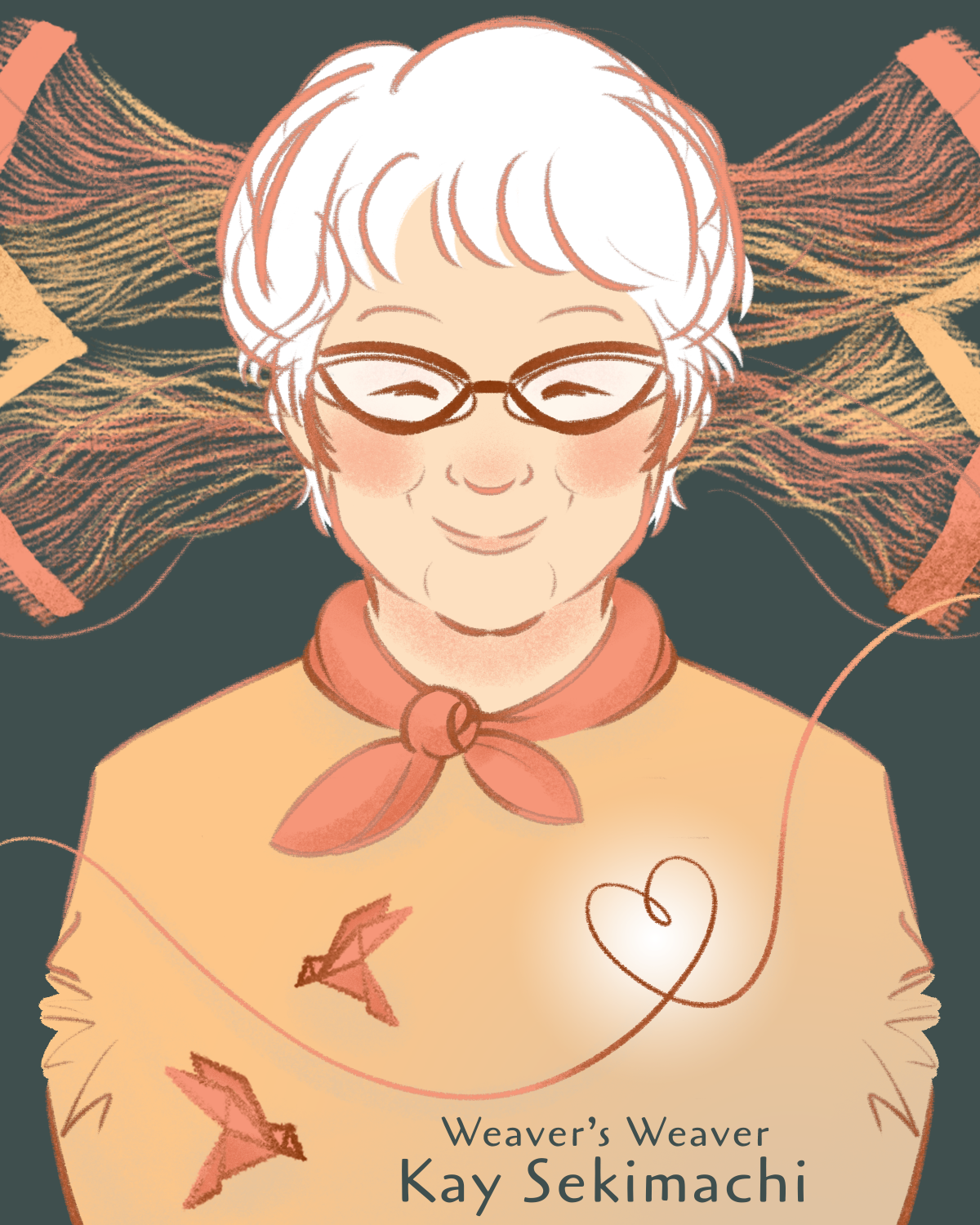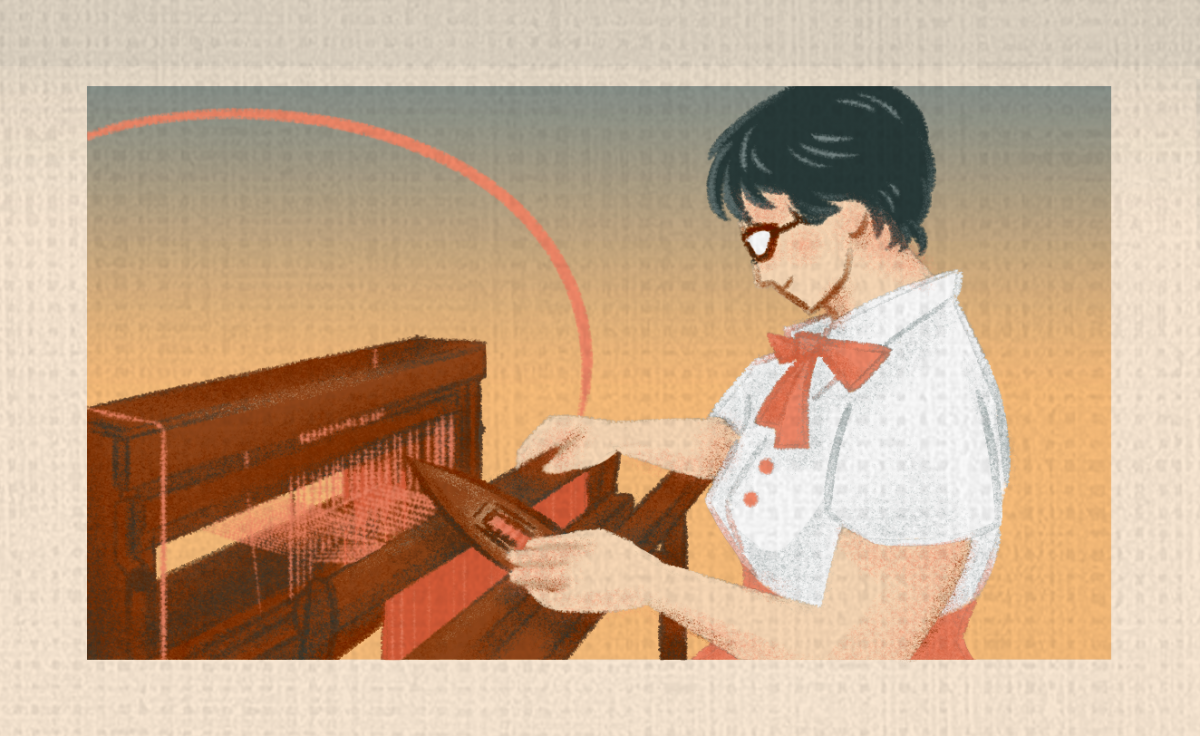
Kay Sekimachi is one of ten artists featured in SAAM’s new comic series, Drawn to Art: Ten Tales of Inspiring Women Artists. Born in 1926 in San Francisco, she grew up in nearby Berkeley. The family was poor, but Kay found an outlet in art and began to make clothing out of newspapers for her dolls. As she once remarked, “Our dolls had designer dresses, and we wore rags!”
But the newspapers with their bold World War II headlines reveal what is next for Kay and her family. A child of Japanese immigrants, Kay and her family were forcibly relocated from their homes and sent to incarceration camps for the duration of the war. There, she spent her time painting, drawing, and learning how to make origami figures.
In the late 1940s, Kay discovered fiber arts when enrolled at the Los Angeles College of Arts and Crafts. When she first walked into the weaving room, she was spellbound, and felt she had found what she wanted to do. In fact, she spent her remaining savings to buy herself a loom. As her weaving became more accomplished, she began to develop innovative and complex ways of working, including creating three-dimensional sculptural forms. No one else had used materials in quite the same way, earning her the well-deserved sobriquet, “the Weaver’s Weaver.”
The comic, drawn by Emily Ehlen, a student at the Ringling College of Art and Design, is filled with vivid depictions of Kay Sekimachi’s life and work. It all begins with the cover, with Kay standing proudly as a successful artist with a fiber work behind her. What is magical for me is how Emily added the depiction of two paper cranes and a thread that forms a heart over Kay’s chest that seems to glow with a warmth from the artist’s own heart.
The comic illustrates scenes of World War II, including bombs dropped from planes and barbed wire fencing along dark, isolated areas of the incarceration camp. In addition, the white paper cranes, a symbol of hope and a nod to the crafts created in the camps—reappear as if to provide light in a time of darkness. And of course, the comic continues to weave its spell through Kay’s life and her inventive weaving practice.
Kay’s paper dolls make a surprise return at the end of the comic. But I’ll let you discover that for yourself. Kay Sekimachi celebrates her 95th birthday on September 30. We invite you to read the comic and share with your friends and young people in your life.




















